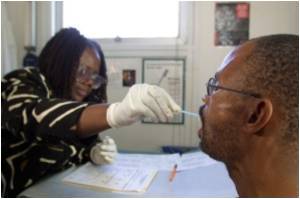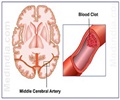Computed tomography pulmonary angiography (CTPA) meant for the detection of pulmonary embolism, has led to over-diagnosis of the condition.

In this study, the researchers compared age-adjusted incidence, mortality and treatment complications (in-hospital gastrointestinal tract or intracranial hemorrhage or secondary thrombocytopenia) of PE among United States adults before (1993-1998) and after (1998-2006) CTPA was introduced. They found the incidence of pulmonary embolism was unchanged before CTPA but increased substantially after CTPA, an 81 percent increase, from 62.1 to 112.3 per 100 000. Pulmonary embolism mortality decreased during both periods: more so before the introduction of CTPA (8 percent reduction, from 13.4 to 12.3 per 100 000) than after (3 percent reduction, from 12.3 to 11.9 per 100 000. In addition, they found case fatality improved slightly before CTPA (8 percent decrease, from 13.2 percent to 12.1 percent) and substantially after CTPA (36 percent decrease, from 12.1 percent to 7.8 percent). Meanwhile, CTPA was associated with an increase in presumed complications of anticoagulation for PE: before CTPA, the complication rate was considered stable, but after it increased by 71 percent (from 3.1 to 5.3 per 100 000).
According to the researchers, CTPA has a downside: the detection of emboli that are so small as to be clinically insignificant that will never cause symptoms or death. "Over-diagnosis matters because it can lead to iatrogenic harm. While a clinically insignificant PE is by definition not harmful, treating such an embolism can cause harm such as bleeding from anticoagulation, which can in the worst case, be fatal," explained lead author Renda Soylemez Wiener, MD, MPH, an assistant professor of medicine at BUSM.
The researchers believe as the use of CT scans continues to rise the problem of over-diagnosis and overtreatment of PEs will likely continue to grow. "Because the harm of treatment can be substantial, including in the worst case death, it is imperative that we do not turn the problem of under-diagnosis into one of over-diagnosis. The researchers feel it is time to strengthen the evidence base: a trial randomizing stable patients with small emboli to observation vs. anticoagulation to help determine whether all patients with PE require treatment. "Better technology allows us to diagnose more emboli, but to minimize harms of over-diagnosis we must learn which ones matter," added Soylemez Wiener.
Source-Eurekalert















